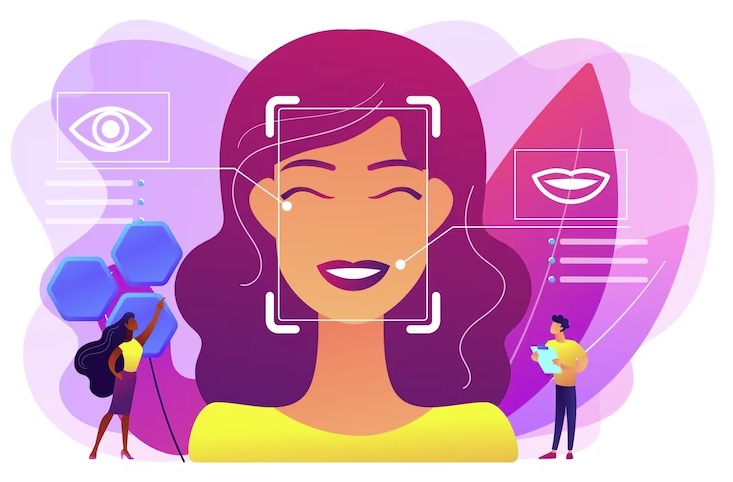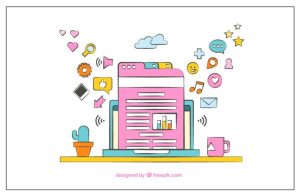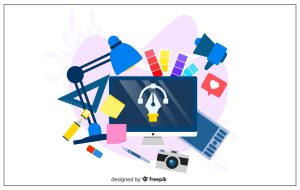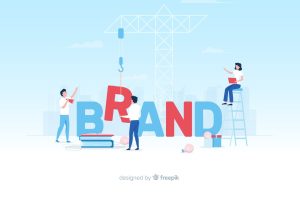AI Use In The Beauty Industry

Unless you’ve been on a tech-free retreat since late 2022, you’ve likely seen innumerable headlines touting the rise of AI. Artificial intelligence is revolutionizing how we live, work, and play, and it seems that no industry is immune from the impact. From healthcare to customer service, finance, entertainment, education, and even art – there’s likely an AI tool for whatever you need.
One industry using AI tools to modernize (and expand) its approach is the beauty industry. With innovative new applications and tools, haircare, skincare, nail art, and other beauty providers can better support their clients by adding value.
AI Beauty Innovation
No matter the service, the beauty industry is a highly-personalized experience. More than a transactional arrangement, providers best serve their customers by taking assessments and making perfect recommendations for their needs. Of course, this can be a time-consuming process that extends the duration required for appointments and care.
Thankfully, AI tools have arrived in the marketplace to help. Whether it’s to help customers help themselves before they arrive or supplement the offering of beauty care professionals, AI tools offer precision and creativity to the pre-service process.
Of course, these tools are not limited to the provider-client relationship. AI tools also support brands in the beauty industry, such as makeup, skin, and haircare products. Rather than taking a guess at a bold new style or a shift in routine, AI tools can help consumers make the right decisions – and purchases – for them.
Personalized Makeup Tutorials
Once upon a time, there were YouTube tutorials. Entire channels on YouTube and accounts on Instagram or TikTok are devoted to accentuating cheekbones, perfecting winged eyeliner, and applying the perfect sultry smoky eyeshadow. While very informative and effective, they lack the precision of a personalized consultation with a makeup artist.
Brands and makeup artists alike are beginning to use AI to reach their current or future clientele. Brand YouCam recently launched a tool they call Beauty Advisor 1-on-1, making it easy for shoppers to connect with makeup artists from anywhere. Advisors can select and apply beauty products to the client’s face virtually, allowing them to experiment with products in real-time (and without the need to scrub their face afterward!).
During this consultation, the advisor can provide a personalized tutorial so clients can recreate the look themselves. The best part is that clients can now shop for a provider that fits their budget without the concern for location and logistics.
Skincare Ritual and Product Recommendations
Using AI, digital tools can now assess facial features, including face, brow, eye, and nose shapes, skin tone, and facial contours. They can also observe skin types and tones with advanced facial simulation. Going a step further, some tools are even predicting facial and skin aging to provide results and recommendations.
Based on this analysis, the tool can recommend products and skincare routines for the best results. This may include tailor-fit cleansing rituals, makeup to hide dark spots or under-eye circles, or treatment for anti-aging.
Skin Health
While not entirely a beauty product, healthy skin is beautiful skin. Yet, whether it’s due to time, money, or discomfort, many people put off routine skin care assessments. Time is of the essence in identifying and treating skin issues, and AI helps to make the whole process easier.
Many people go one of two directions if they spot something out of the ordinary on their skin: ignore it and hope it goes away, or consult sites like WebMD and potentially misdiagnose themselves.
AI-powered dermatology is the new frontier in skin care. According to the NIH, AI can use image analysis to evaluate and diagnose skin issues as well or better than humans. AI can continuously learn from dermoscopic images and provide guidance on skin lesions to ensure clients get the care they need.
Hairstyle and Color Recommendations
Back to beauty. Taking a chance on a new hairstyle or color often feels like a leap of faith. Choosing a celebrity style or a bold new hue can be risky; after all, who’s to say that a great style or color on another person will look good on you?
Of course, that’s where haircare professionals come in. The pros don’t simply follow orders. They use their expertise to say yay or nay to a style a client chooses. Still, there’s no way to determine the outcome until it’s done.
AI can be used to help with the process. A client can either try on colors and styles from the comfort of home before heading to the salon, or a hair professional can use one of these tools with their client to experiment. Trying on cuts and colors before taking the plunge is a great way to choose the perfect fit.
Virtual Makeovers
Encompassing a bit of all the tricks listed above, virtual makeovers are a fun use for AI. Stand in front of your camera and let the tool experiment with a new outfit, a change in cut and color, and some bold (or subtle) makeup.
When offered by brands and retailers, these tools enable easy purchasing of the things you like most. Beauty brand Sephora, for example, has added an AI feature to their shopping app. Try on new makeup, play around with the style, and add your favorite products to your cart. Fashion brands and styling products are taking the hint and doing the same with their catalogs. In an era of online shopping, try-before-you-buy is a novel concept making a comeback in AI form.
New Opportunities for Beauty Brands
Beauty brands’ opportunities are seemingly endless as AI enables clients to fit personalized recommendations into their busy schedules. Despite warnings of security risks and humanoid robots taking over, AI poses interesting opportunities for consumers and brands alike.
Stefanie Shank. Having spent her career in various capacities and industries under the “high tech” umbrella, Stefanie is passionate about the trends, challenges, solutions, and stories of existing and emerging technologies. A storyteller at heart, she considers herself one of the lucky ones: someone who gets to make a living doing what she loves. Stefanie is a regular writer at Bora.






